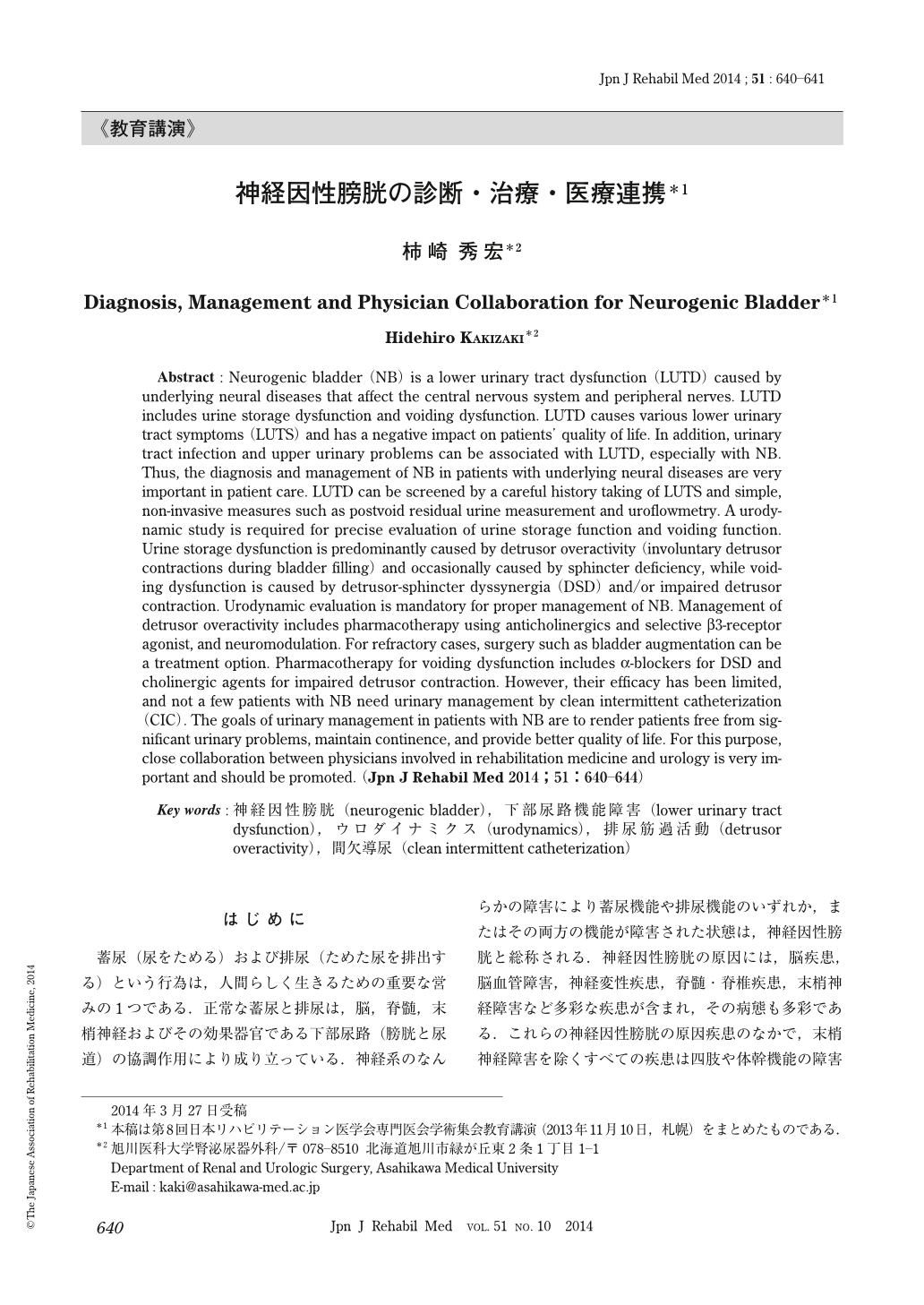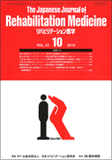Japanese
English
- 販売していません
- Abstract 文献概要
- 1ページ目 Look Inside
- 参考文献 Reference
はじめに
蓄尿(尿をためる)および排尿(ためた尿を排出する)という行為は,人間らしく生きるための重要な営みの1つである.正常な蓄尿と排尿は,脳,脊髄,末梢神経およびその効果器官である下部尿路(膀胱と尿道)の協調作用により成り立っている.神経系のなんらかの障害により蓄尿機能や排尿機能のいずれか,またはその両方の機能が障害された状態は,神経因性膀胱と総称される.神経因性膀胱の原因には,脳疾患,脳血管障害,神経変性疾患,脊髄・脊椎疾患,末梢神経障害など多彩な疾患が含まれ,その病態も多彩である.これらの神経因性膀胱の原因疾患のなかで,末梢神経障害を除くすべての疾患は四肢や体幹機能の障害を呈しうるため,リハビリテーション(以下,リハ)科専門医の診療対象ともなりうる.神経因性膀胱による下部尿路機能障害は,適切な診断と治療がなされなければ,尿路感染症や水腎症などの腎・尿路合併症につながる危険性を秘めていることを日々の診療において銘記すべきである.また,下部尿路機能障害は,蓄尿症状(頻尿,尿意切迫感,切迫性尿失禁など),排尿症状(尿勢低下,尿線の中断,腹圧排尿など),排尿後症状(残尿感)などの下部尿路症状の原因となり,日常生活動作(ADL)の障害とあいまって患者の生活の質(QOL)の低下につながることも認識すべきである.
本稿では,神経因性膀胱(神経疾患に伴う下部尿路機能障害)の病態と診断,治療,そしてリハ科専門医と泌尿器科専門医の連携の重要性について解説する.
Abstract : Neurogenic bladder (NB) is a lower urinary tract dysfunction (LUTD) caused by underlying neural diseases that affect the central nervous system and peripheral nerves. LUTD includes urine storage dysfunction and voiding dysfunction. LUTD causes various lower urinary tract symptoms (LUTS) and has a negative impact on patients' quality of life. In addition, urinary tract infection and upper urinary problems can be associated with LUTD, especially with NB. Thus, the diagnosis and management of NB in patients with underlying neural diseases are very important in patient care. LUTD can be screened by a careful history taking of LUTS and simple, non-invasive measures such as postvoid residual urine measurement and uroflowmetry. A urodynamic study is required for precise evaluation of urine storage function and voiding function. Urine storage dysfunction is predominantly caused by detrusor overactivity (involuntary detrusor contractions during bladder filling) and occasionally caused by sphincter deficiency, while voiding dysfunction is caused by detrusor-sphincter dyssynergia (DSD) and/or impaired detrusor contraction. Urodynamic evaluation is mandatory for proper management of NB. Management of detrusor overactivity includes pharmacotherapy using anticholinergics and selective β3-receptor agonist, and neuromodulation. For refractory cases, surgery such as bladder augmentation can be a treatment option. Pharmacotherapy for voiding dysfunction includes α-blockers for DSD and cholinergic agents for impaired detrusor contraction. However, their efficacy has been limited, and not a few patients with NB need urinary management by clean intermittent catheterization (CIC). The goals of urinary management in patients with NB are to render patients free from significant urinary problems, maintain continence, and provide better quality of life. For this purpose, close collaboration between physicians involved in rehabilitation medicine and urology is very important and should be promoted.

Copyright © 2014, The Japanese Association of Rehabilitation Medicine. All rights reserved.


